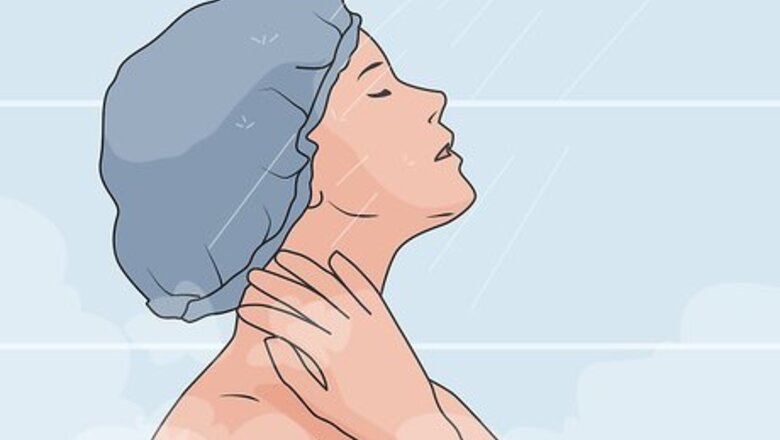
views
Protecting Your Ears
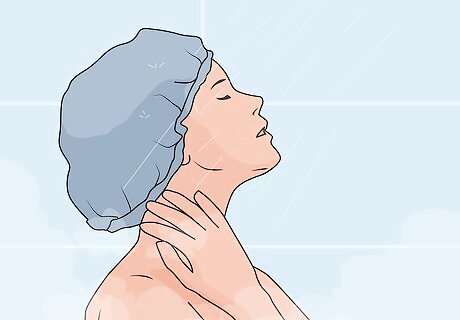
Cover your head and ears with a shower cap. If necessary, put your hair up into a bun. Hold the shower cap by the elastic edges and loop one side around the back of your neck. Stretch the elastic and cover the rest of your head with the cap so the elastic runs along your hairline and over your ears. Shower caps are easy to find at most drug stores and beauty supply stores.

Keep your ears dry with disposable ear covers. Disposable ear covers look like tiny shower caps that go over your ears. To put them on, stretch the elastic around the tops of your ears and pull it down over the lobes. If you’re washing your hair, be careful not to accidentally pull them off as you’re massaging shampoo and conditioner into your scalp. You can buy packs of disposable ear covers online or at beauty supply stores. These are also perfect for keeping your ears dye-free when you’re changing your hair color.
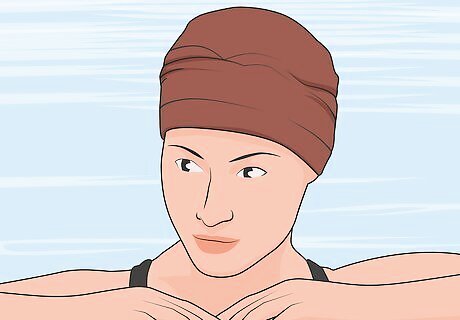
Wear a swim cap large enough to cover your ears. If you have long hair, pull it back into a bun or ponytail. Place the edge of the cap on top of your forehead and then stretch it over the top of your hair. Make sure the front edge is just above your eyebrows and your ears are covered on the sides. If your cap isn't large enough to cover your ears, try to buy a full-coverage cap that has elongated sides made to go over your ears. You can buy swim caps online or from any superstore that sells swimsuits and swim accessories. Some gyms or activewear shops may also sell them.
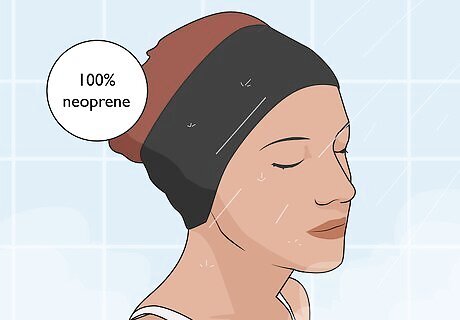
Put on a water-resistant headband that covers your ears. Hold the headband so that the inner lining (with small grips) is on the inside. Hold one edge at the top of your forehead and stretch the band over your head so the other edge sits at the base of your hairline on the back of your head. Look for a headband made from 100% neoprene for the best protection and fit. You can buy swimming headbands online or from swimwear specialty shops. Make sure the band is wide enough at the sides to cover your ears entirely.
Keeping Your Ear Canals Dry
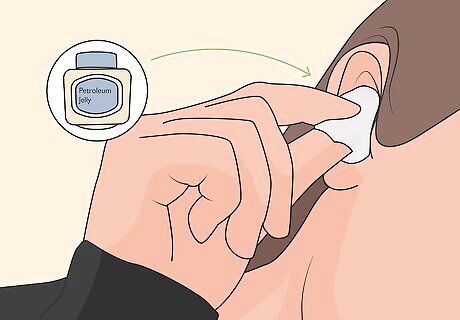
Plug your ears with cotton balls covered in petroleum jelly. Use a clean finger to dab petroleum jelly onto one side of a cotton ball. Gently push it into your ear and, once it's snug, dab more petroleum jelly onto the outside of the cotton ball. The petroleum jelly will repel moisture from the cotton ball so none gets in your ear canal. Once you've showered, take out the cotton balls and throw them away.
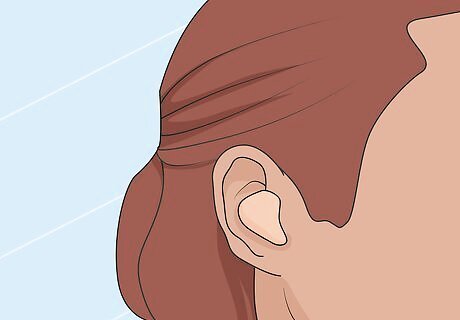
Protect your inner ear with silicone ear putty. Wash your hands before you handle the ear putty. Place the earplug over your ear canal and use your fingers to shape the putty over the opening of your ear as well as the grooves. Don't force it into your ear canal, just gently mold it over your ear. If you notice any cracks in the putty, don't try to remold it, just use a fresh pair. To take the plugs out, push your ear upward from the backside of your ear and then pull down on your earlobe. Keep doing this until the putty has loosened up enough for you to take it out. You can use the same pair of silicone earplugs for up to 2 weeks as long as they stay in good condition (i.e., no cracks or crumbliness around the edges). If you have an ear infection or if you’re recovering from surgery, talk to your doctor before using ear putty. M. Jennifer Derebery M. Jennifer Derebery, Ear Health Expert While singing in the shower can be joyful, take care to protect your ears from excessive water exposure. Use silicone ear plugs or a shower cap to cover the ear canal opening. This prevents painful infections and preserves your hearing for a lifetime of singing, both in and out of the tub!
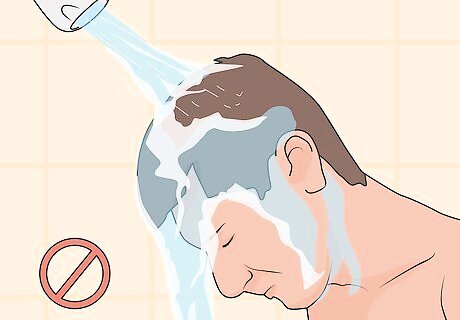
Don't put your head under the stream of water. Stand back from the showerhead so only your body is getting wet. Carefully splash water onto your body with your hands or use a wet rag or sponge. You may still get some specks of water on your outer ear, so keep a dry hand towel nearby so you can pat any droplets away. Of course, this will only work if you don't plan to wash your hair.
Drying Your Ears

Pat your ears dry with a towel or tissue. If you've accidentally splashed some water on your outer ear, dry that first as soon as you get out of the shower. Hold a soft bath towel or tissue in your hand and gently pat your ear. Layer the towel or tissue over your fingers to wipe away any moisture stuck in the small crevices and grooves. Avoid using rough, itchy towels because they may irritate the sensitive skin on your ears.
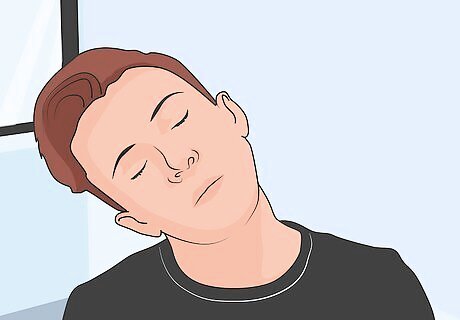
Tip your head to the side to drain water out of your ear canal. If you suspect you've accidentally gotten water inside your ear, get it out as soon as you hop out of the shower. Lean over to the front and then turn your head to the side so your ear is facing the ground. Hold the position until you feel the water come out. It may help to gently bob your head up and down. If the water is really in there, bend your head all the way down (like you're touching your toes) so you're upside down until you feel it move around in your ear. Then, lift your torso to be parallel to the ground and turn your head to the side to drain it out. You can also lie down on your side with the water-laden ear facing down.
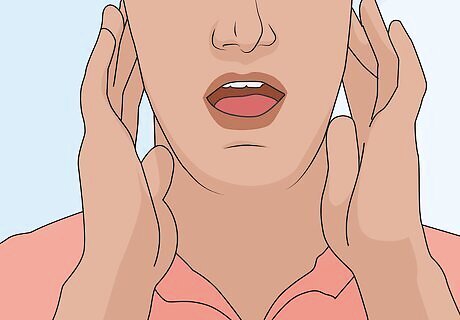
Move your jaw around to help dislodge water stuck inside your ear. Chew gum, yawn, or move your jaw as if you’re chewing to loosen up the water. If the water still won’t come out, try doing these chewing motions when you’re leaning to one side or lying on your side with the water-laden ear facing down. These simple movements help move your Eustachian tubes around, which can dislodge any stubborn droplets of water.
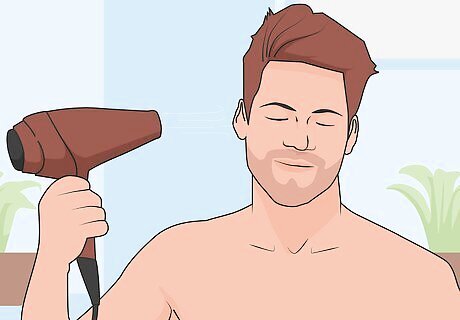
Blow-dry your ears using a cool or low-heat setting. Hold the hairdryer 12 inches (30 cm) away from your ear and turn it on the lowest heat and speed setting. If your hair dryer has a "cool" button, alternate between low heat and cool. Don't use a high heat setting because your ear will get hot very quickly!
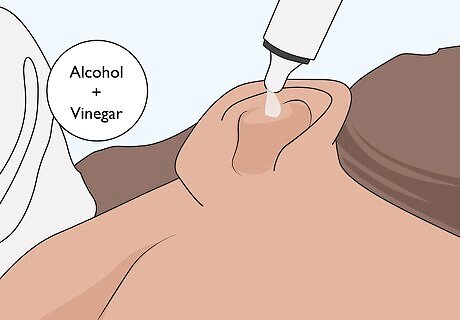
Dry out your ears with rubbing alcohol and vinegar. Mix rubbing alcohol and white vinegar in equal amounts, then put 2-3 drops in the affected ear. You can use a medicine dropper or soak a cotton ball and squeeze it to release drops into your ear. Wiggle the outside of your ear gently to encourage the liquid to go into your ear canal, then tilt your head with the affected ear up for 3-5 minutes. Tilt your head the other way to let it drain out when you’re done. The alcohol and vinegar mixture will help dry out your ear canal and prevent infections, like swimmer’s ear. If you prefer, you can use an over-the-counter ear drop solution, like Swim-Ear, Auro-Dri, or Debrox. Before adding this solution to your ear, dry the outside of your ear as much as possible with a towel or hair dryer on a low-heat setting.

See a doctor if you experience fever, itchiness, or drainage. If you notice any itching inside your ear canal along with redness or fluid drainage, call your doctor. Let them know if you feel feverish, have a headache, or if it hurts to touch your ear. If you already have an ear infection and these symptoms get worse or don't go away, call your doctor.


















Comments
0 comment